Earth mantle
Type of resources
Topics
Keywords
Contact for the resource
Provided by
Years
Formats
Representation types
Update frequencies
-

Input and output files from first-principles calculations to compute the lattice thermal conductivity, elastic properties, and phase stability of various lower mantle minerals. Spreadsheets of processing and final results. Article pre-prints.
-
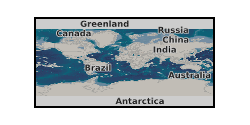
The three-component data are downloaded from CDSN and processed with instrument response removed. The data coverages include sampling in the East Asia, southwest and northwest Pacific.
-
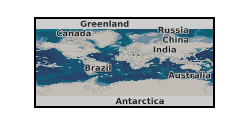
Log file and GSAS data files for synchrotron study of NaMnF3. Diffraction patterns from synchrotron experiments on NaMnF3. NERC grant: Understanding the D' zone: novel fluoride analogues to MgSiO3 post perovskite NERC grant abstract: The thermal boundary layers of a convecting system control many aspects of its style of convection and thermo-chemical history. For the silicate Earth these boundary layers are the lithosphere, whose low temperature and high rigidity induces slab-style downwellings, and the D' region on the mantle side of the core-mantle-boundary (CMB). The D' region is the source of plume-style convection and regulates heat exchange from the core to the silicate Earth. The lower thermal boundary is made more complex by the existance of a phase transition in the most common mineral in the lower mantle (magnesium-silicate perovskite) which changes the properties of the D' region at the CMB. Unfortunately, most of these properties cannot be measured at the extreme pressures (120 GPa) of stabilisation of the post-perovskite phase. The best chance of constraining them is through a combination of measurements on low-pressure analogue materials (which have the same crystal structure but a different chemical composition) and ab initio simulations of both the analogue and natural systems. We have recently developed a set of ABF3 analogues whose properties are much more similar to MgSiO3 than are those of the CaBO3 analogues currently in use. We propose, therefore, to use these improved fluoride analogues to determine the properties of post-perovskite which control the dynamics of D' (phase diagram, pressure-temperature-volume relations, viscosity, slip systems and thermal diffusivity). These measurements will allow models to be developed which accurately predict the behaviour of the lower thermal boundary layer of the mantle. This will place coinstraints on (1) the heat budget, dynamo power and start of crystallisation of the inner core, (2)the vigour of plumes, (3) the ratio of underside heating to internal heating in the mantle and, (4) the radioactive element budget of the silicate Earth.
-
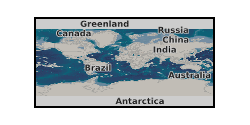
The two-phase modeling of water between liquid iron and silicate melt at 50 and 135 gigapascals (corresponding to 3500 and 4200 kelvin) was performed by using ab initio molecular dynamics implemented in the Vienna Ab Initio Simulation Package.
-
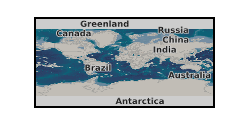
The dataset consists of a table of 64 isotope ratio measurements of the AMES Ce standard (Willbold, 2007). The data was collected at Imperial College, London between April 2013 and March 2014 using a ThermoScientific Triton thermal-ionisation mass spectrometer following the technique described in Willbold, Journal of Analytical Atomic Spectrometry, 2007. The data is used to assess the reproducibility and accuracy of the mass spectrometric setup available at the time. Reference: Willbold, M., 2007. Determination of Ce isotopes by TIMS and MC-ICPMS and initiation of a new, homogeneous Ce isotopic reference material. Journal of Analytical Atomic Spectrometry, 22: 1364-1372 https://doi.org/10.1039/B705306A
-

The data forms the basis of the paper Novella et al (2020 (https://doi.org/10.1016/j.epsl.2019.115973) and full interpretation can be found there. Basalt glass chips were supplied by Bramley Murton (Southampton) and the sample contexts are detailed in https://doi.org/10.1093/petrology/43.11.1987. New trace element data is provided for the clean basaltic glasses (all reported in ppm). The Vanadium isotope composition (del51V) is also reported for these chips. Uncertainties in these analyses are provided as 2-sigma. Updated estimates of the ferric iron content of these chips also provided, based on recalibration of the data reported by Shorttle et al 2015 (https://doi.org/10.1016/j.epsl.2015.07.017).
-
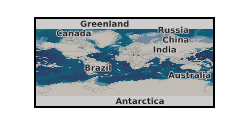
This data is described in section 6.4 of the following paper, Three-Field Block Preconditioners for Models of Coupled Magma/Mantle Dynamics by Rhebergen et al DOI:10.1137/14099718X
-
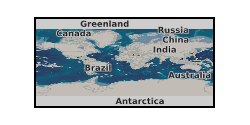
This dataset holds the output of all the simulations in the Open Access article - Garel, F., S. Goes, D. R. Davies, J. H. Davies, S. C. Kramer, and C. R. Wilson, Interaction of subducted slabs with the mantle transition-zone: A regime diagram from 2-D thermo-mechanical models with a mobile trench and an overriding plate, Geochem. Geophys. Geosyst., 15, 1739-1765, doi 10.1002/2014GC005257, 2014.
-

Os isotopes, highly siderophile element abundance measurements, lithophile trace element data, major element data, electron microprobe and LA-ICP-MS mineral chemistry of Cr-spinel and sulphide - all data for a suite of peridotites from the Shetland Ophiolite Complex, and published in O'Driscoll, B., Walker, R.J., Clay, P.L., Day, J.M.D., Ash, R.A. and Daly, J.S. 2018. Length-scales of chemical and isotopic heterogeneity in the mantle section of the Shetland Ophiolite Complex, Scotland. Earth and Planetary Science Letters, 488, 144-154 All samples come from a locality called The Viels, sampled within a 45 m2 area, on the island of Unst, Shetland Archipelago (UK) at HP64438 11060 (British National Grid)
-

The dataset contains the outputs from 3D spherical incompressible mantle convection models. Included outputs, such as visualisation files (to use with open-source software ParaView), allow to analyse the links between the thermal evolution of the mantle and the preservation of geochemical heterogeneity. The data is linked to the manuscript titled "Geodynamic Controls on Mantle Differentiation and Preservation of Long-Term Geochemical Heterogeneity: Focus on the Primitive Undegassed Mantle”. The dataset gathers outputs to produce the figures of the article and post-processing scripts. It also includes the necessary input files and executables needed to reproduce the geodynamic simulations. More details in the README.md file.
 NERC Data Catalogue Service
NERC Data Catalogue Service